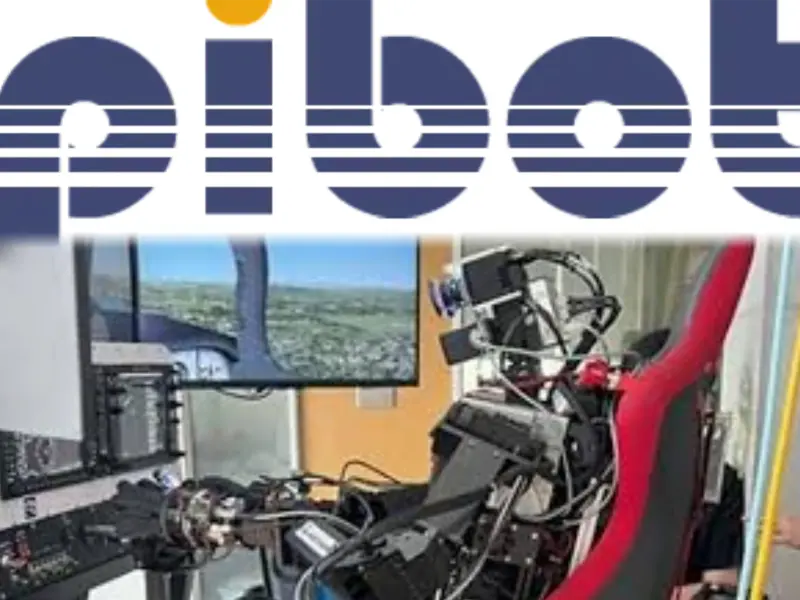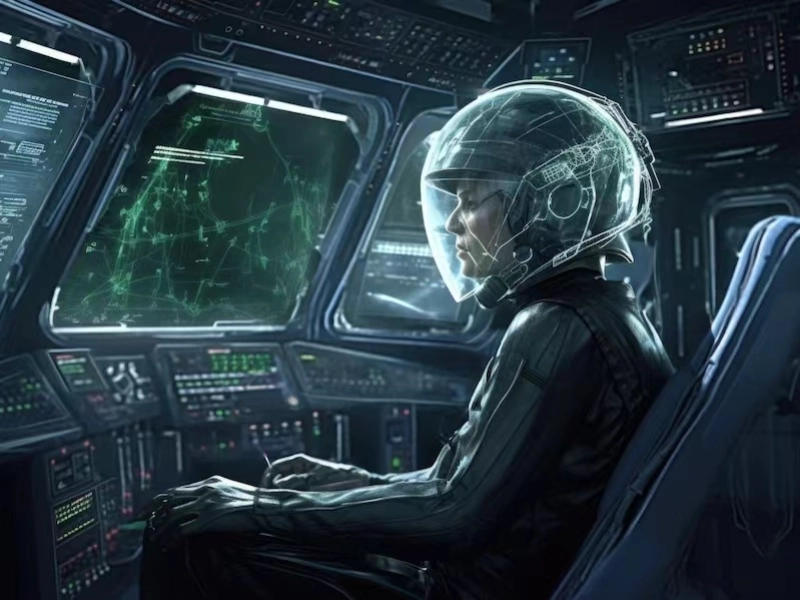- ALIAS serves as a robot co-pilot for manned aircraft, enhancing safety, reducing pilot workload, and improving operational efficiency through machine vision, speech recognition, and robotic manipulation capabilities.
- Pibot is a humanoid robot capable of autonomously piloting an aeroplane, mimicking human pilot actions, and leveraging artificial intelligence algorithms for decision-making and control.
- Robot-assisted flight piloting offers benefits such as improved safety, reduced human error, enhanced situational awareness, and increased operational efficiency in aviation operations.
Autonomous systems are increasingly used in aviation to assist pilots, enhancing operational efficiency and safety. These systems use advanced technology like artificial intelligence and machine learning to automate tasks and provide real-time data analysis. Robots are emerging as valuable co-pilots in manned aircraft, working alongside human pilots to enhance decision-making processes. Robots are equipped with advanced sensors, communication systems, and algorithms to assist in various flight operations. The integration of robotic technology is crucial for enhancing flight safety and efficiency, mitigating human error, responding swiftly to critical situations, and providing proactive decision-making insights.
Current technologies in robot-assisted flight piloting
The Aircrew Labour In-Cockpit Automation System (ALIAS) is a robot co-pilot designed to enhance safety, reduce pilot workload, and improve operational efficiency in manned aircraft. It integrates advanced automation technologies, providing support throughout the flight phases. Pibot, a humanoid robot, mimics human pilot actions, showcasing advancements in robotics and artificial intelligence, enabling precision and reliability in complex systems like aircraft.
ALIAS: Robot co-pilot for manned aircraft
ALIAS is a robot co-pilot system designed to assist pilots during flight operations in manned aircraft. It utilizes advanced technologies such as machine vision, speech recognition, and robotic manipulation to enhance cockpit automation and support pilot decision-making. ALIAS uses machine vision to analyze visual data from the aircraft’s surroundings, instruments, and displays, providing real-time visual feedback to the pilot. It also has speech recognition capabilities, allowing pilots to interact with the robot co-pilot using voice commands, enhancing operational efficiency and reducing cognitive workload.
Pibot: Humanoid robot capable of piloting an airplane
Pibot is a humanoid robot developed to pilot an airplane autonomously, mimicking the actions and decision-making capabilities of a human pilot. It uses artificial intelligence algorithms and machine learning models to analyze flight data, monitor aircraft systems, and make real-time decisions during flight operations. Pibot can adapt to changing conditions, respond to emergencies, and follow air traffic control instructions autonomously, demonstrating advanced capabilities in autonomous flight piloting.
The advancements in robotic technology integrated into Pibot ensure high levels of safety, reliability, and performance in piloting aircraft. The robot’s ability to handle critical flight tasks, maintain situational awareness, and communicate with ground control systems enhances overall flight safety and operational efficiency, making it a valuable asset in the aviation industry’s pursuit of autonomous flight capabilities.
Also read: How does Atlas robot work?
In summary, Pibot is a humanoid robot dedicated to the autonomous piloting of aircraft, while ALIAS is a robot co-pilot system designed to assist human pilots in flight operations. Pibot focuses on independent decision-making and control of the aircraft, while ALIAS enhances pilot capabilities and cockpit automation through collaborative interaction with human pilots.

Robot pilots VS Auto-pilot features
Robot pilots and auto-pilot features are two distinct technologies in the aviation industry. Robot pilots are autonomous systems that can perform all human pilot functions without human intervention, including take-off, navigation, and landing. They are still in development and not widely used in commercial aviation due to regulatory and safety concerns.
The concept of robot pilots raises ethical and legal questions regarding accountability and decision-making in emergency situations. Auto-pilot features, on the other hand, automate tasks and functions to assist human pilots in controlling the aircraft, such as heading, altitude, and speed. While autopilots can handle routine tasks, human pilots still need to monitor and make decisions in emergency situations. Autopilots are widely used in commercial aviation, while robot pilots are still in the experimental stage.
Benefits of robot-assisted flight piloting
Robot-assisted flight piloting can significantly improve flight safety and efficiency by reducing human error and improving situational awareness. Robots are not susceptible to fatigue, distractions, or emotional factors, ensuring reliable and error-free operations. They can automate routine tasks and assist in critical decision-making, minimising the risk of human errors.
Advanced sensors, machine vision, and data analysis capabilities can enhance situational awareness, leading to quicker responses to emergencies and better risk management. The integration of autonomous systems in aviation can also increase operational efficiency by optimising flight procedures, reducing delays, and improving resource utilization. This division of labour between humans and robots can streamline cockpit operations, enhance workflow efficiency, and contribute to on-time performance and cost savings for airlines.
Robot co-pilots can aid pilots in making informed decisions during flight by providing real-time data analysis, predictive insights, and scenario-based recommendations. They can quickly process vast amounts of information, identify trends, and present relevant data in a clear, actionable format.
Robot-assisted flight piloting can also enhance pilot training and skill development by providing realistic simulation environments, interactive learning experiences, and feedback on performance. This hands-on training can supplement traditional methods, accelerate skill acquisition, and prepare pilots for real-world challenges.
Integration of autonomous systems
Robot-assisted flight piloting in aviation presents technological challenges like compatibility, interoperability, and system complexity. It requires seamless integration with existing systems, avionics, and communication networks for reliable performance. Operational challenges include crew training, human-robot interaction, and system reliability. Pilots and maintenance personnel need to be trained on robot co-pilots, interpret outputs, and troubleshoot issues. Clear protocols and communication channels are crucial for successful integration and operational success.

Regulatory and safety concerns
Robot-assisted flight piloting requires regulatory considerations for certification, airworthiness, and compliance with aviation standards. Regulations must evaluate the safety, reliability, and performance of autonomous systems in aircraft. Clear guidelines, testing protocols, and certification processes are crucial to addressing these concerns.
Safety is a top priority, as autonomous systems must demonstrate reliability, redundancy, and fail-safe mechanisms to prevent accidents. Ensuring strict safety standards, rigorous testing, and industry best practices is essential for confidence in their operation on commercial flights. Continuous monitoring and feedback mechanisms are necessary for continuous improvement.
Also read: What is the Atlas robot?
Ethical and legal implications
The transition to robot-assisted flight piloting raises ethical concerns about human oversight, accountability, and decision-making authority in autonomous systems. It is crucial to establish roles, responsibilities, and ethical boundaries for human pilots and robot co-pilots to maintain transparency and trust.
Addressing ethical dilemmas, privacy concerns, and the moral implications of autonomous decision-making in aviation requires careful guidance from industry stakeholders, regulators, and experts. Legal implications include liability, insurance, and responsibility in cases of accidents or incidents involving autonomous systems. Clarifying legal frameworks, liability allocation, and insurance coverage is necessary to protect all parties involved and ensure accountability.
Examples of relevant case studies
Boeing has been developing and testing autonomous flight technologies for commercial aircraft, including the Boeing 777X. The aircraft features advanced automation systems that assist pilots in various flight phases, such as takeoff, landing, and in-flight operations. Boeing’s efforts to integrate autonomous systems aim to improve safety, efficiency, and performance in aviation while maintaining human oversight and control.
Airbus has been working on the Skyways project, which explores the use of autonomous drones for urban delivery services. The project involves developing drone delivery systems that can operate autonomously in urban environments, delivering packages to designated locations. Airbus’s initiative showcases the potential of autonomous systems to enhance logistics and transportation services through unmanned aerial vehicles.
Also read: Should robots go to space instead of humans?
NASA’s Unmanned Aircraft Systems Integration in the National Airspace System: NASA has been conducting research and testing on integrating unmanned aircraft systems (UAS) into the national airspace system. The agency’s efforts focus on developing technologies and protocols to enable the safe and efficient operation of autonomous aircraft in shared airspace with manned aircraft. NASA’s work in UAS integration demonstrates the possibilities and challenges of incorporating autonomous systems in aviation operations.
Embraer has introduced the Enhanced Vision System (EVS) in its E2 series of commercial aircraft, which includes advanced sensor technologies and augmented reality displays to enhance pilots’ situational awareness. The EVS provides real-time data visualisation, terrain mapping, and obstacle detection capabilities to assist pilots in navigating challenging environments. Embraer’s integration of EVS showcases the benefits of augmented reality and sensor fusion in supporting pilot decision-making and flight operations.
Pop quiz
Which aerospace company has been developing autonomous flight technologies for commercial aircraft, including the Boeing 777X?
A. Airbus
B. Boeing
C. Embraer
D. Lockheed Martin
E. SpaceX
The correct answer is at the bottom of the article.
Potential advancements in autonomous flight technology
Future advancements in robot-assisted flight piloting will focus on advanced automation capabilities, including autonomous takeoff and landing, adaptive flight control, and intelligent decision-making algorithms. These systems will handle complex flight scenarios, optimise fuel efficiency, and enhance performance. The integration of artificial intelligence, machine learning, and sensor technologies will enable robots to adapt to changing conditions and interact with human pilots.
Impact on the aviation industry and pilot training
Robot-assisted flight piloting is expected to revolutionise aviation operations by improving safety, efficiency, and sustainability. This will lead to reduced operational costs, increased on-time performance, and enhanced customer satisfaction. The integration of robot co-pilots will optimise route planning, minimise delays, and enhance operational efficiency. Pilot training programmes will evolve to include human-robot interaction, system monitoring, and decision-making collaboration. Training curricula will include simulation exercises, scenario-based training, and hands-on experience with autonomous systems.
The correct answer is B, Boeing.

